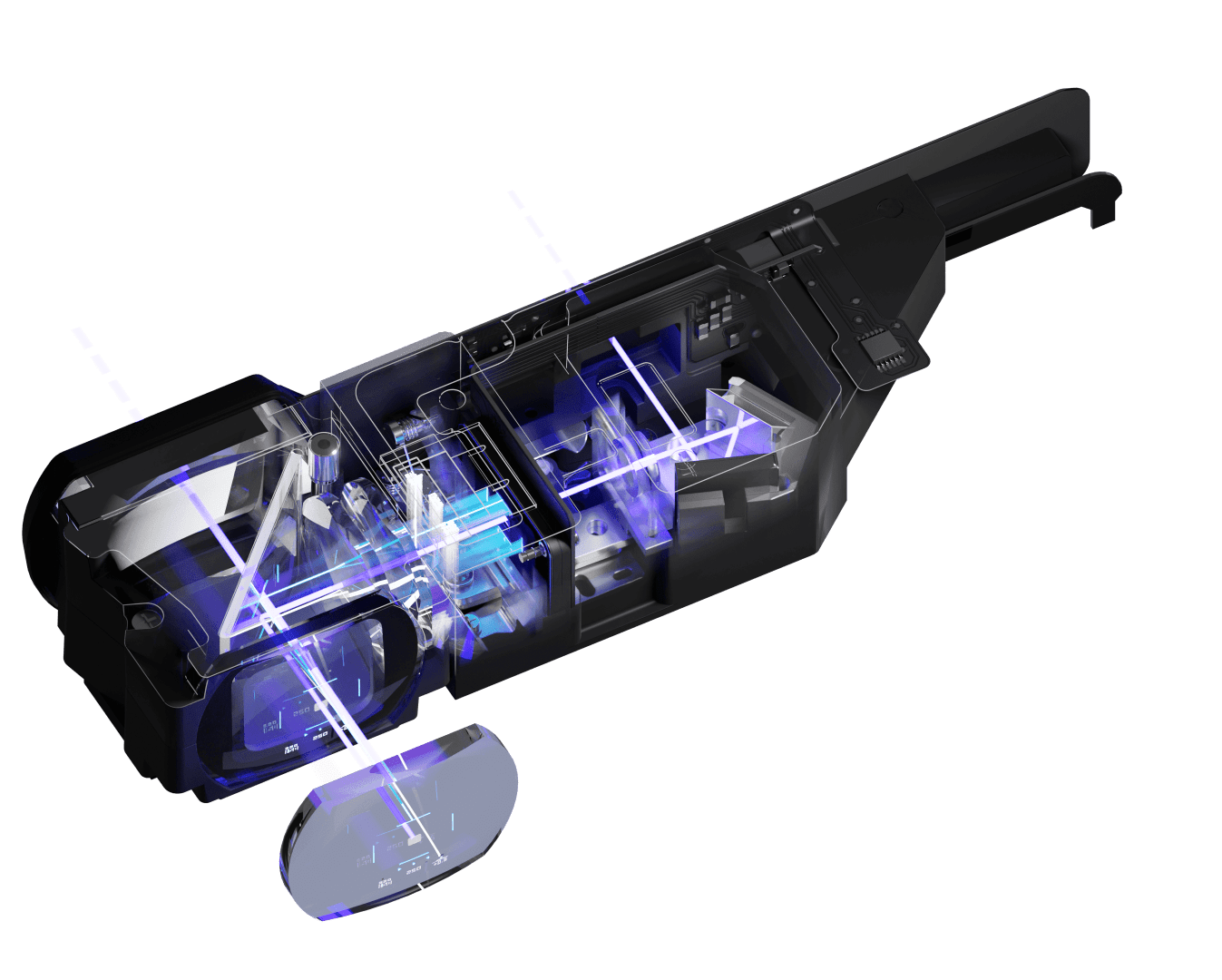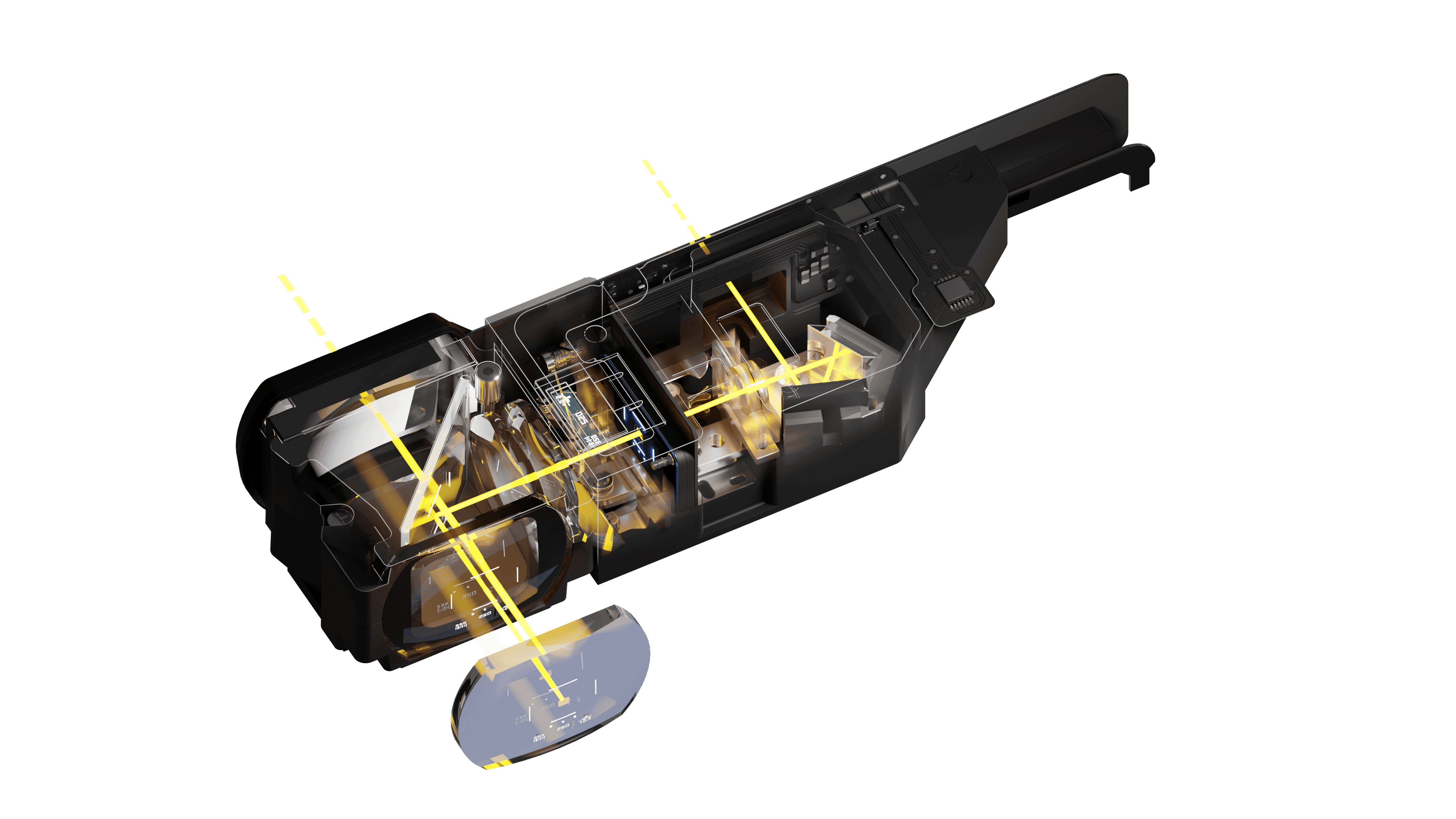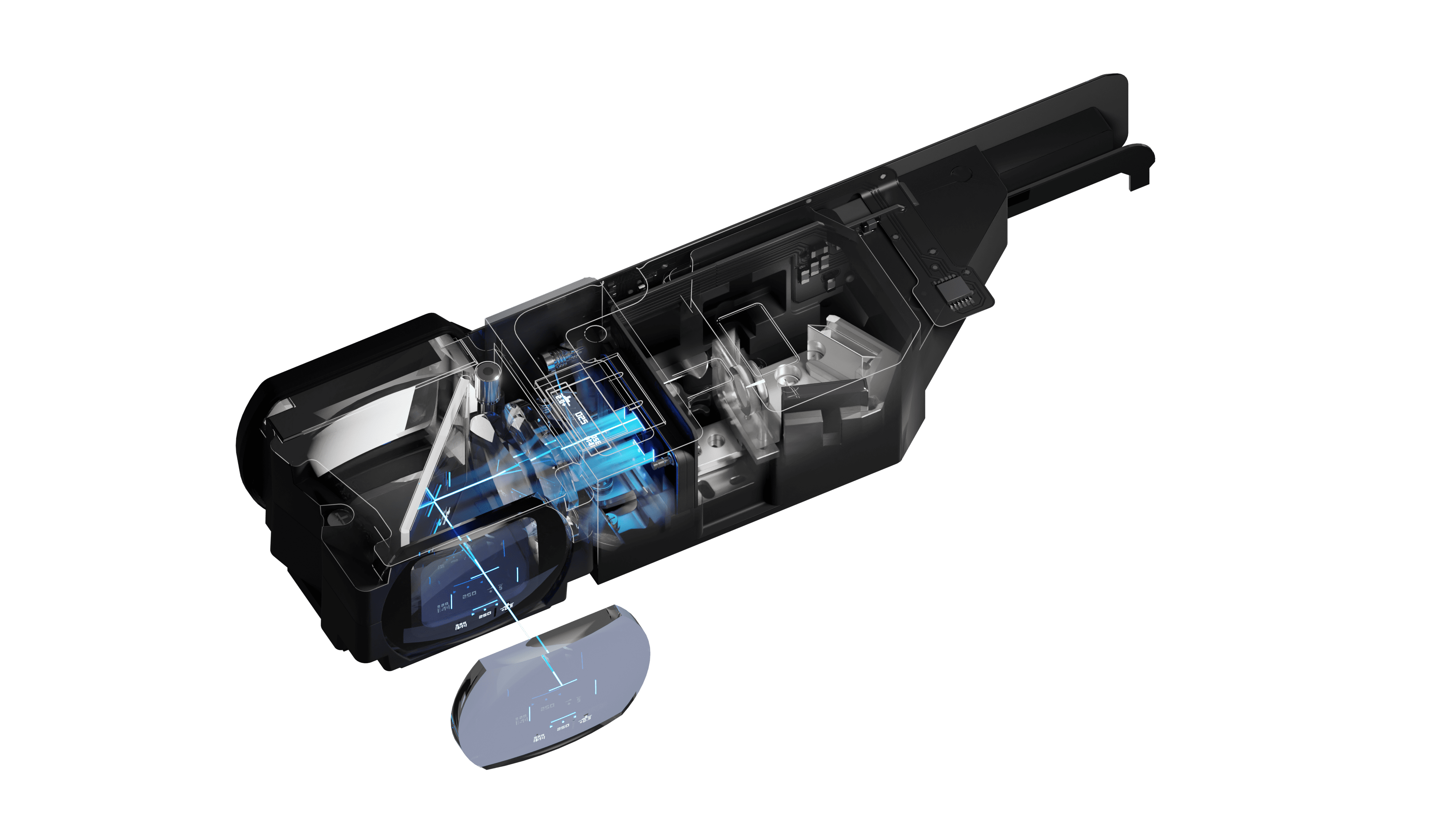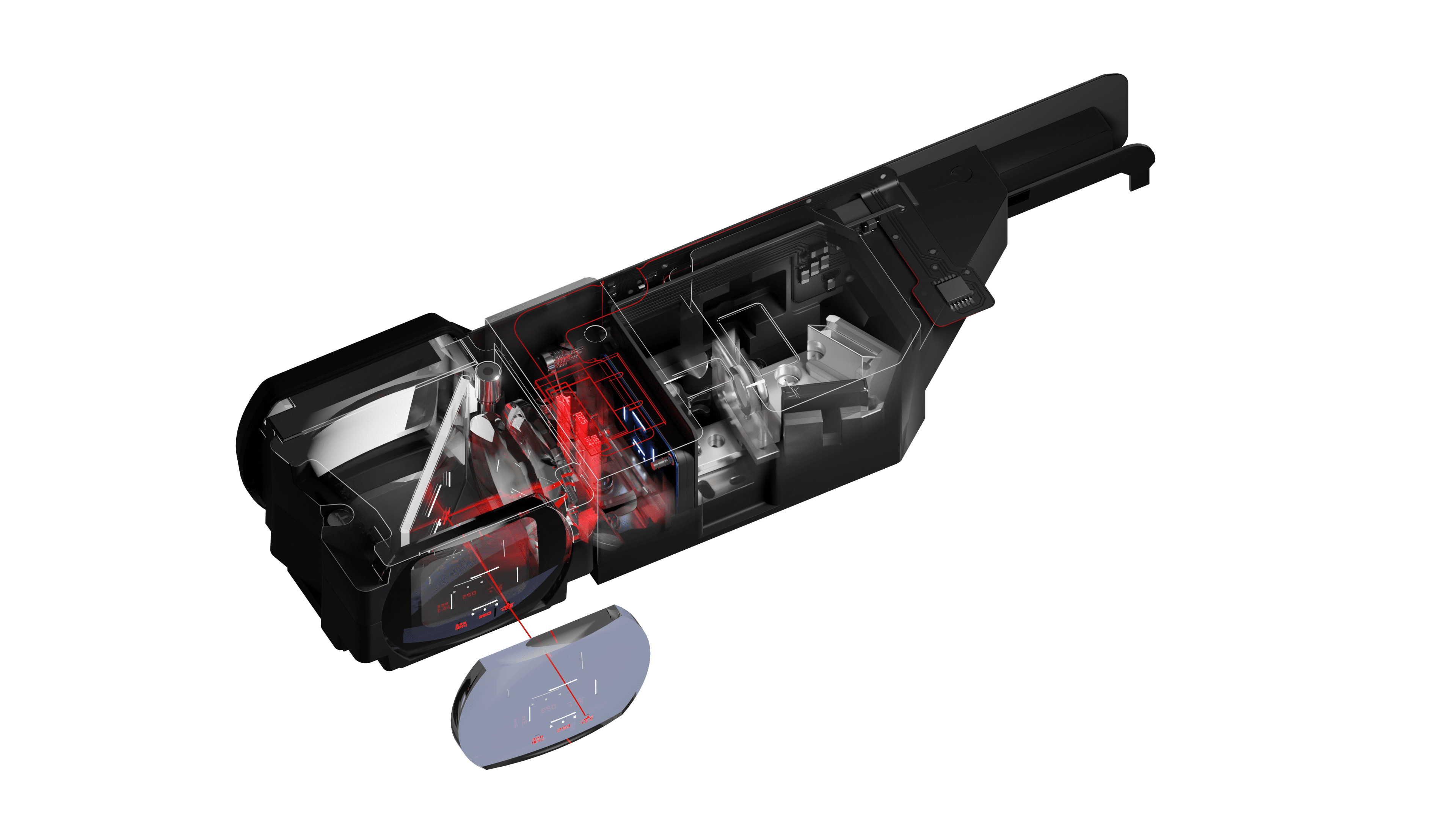Optical Rangefinder


Manual Focus Only
Forget the struggles of trying to instruct an auto-focus system that thinks otherwise.
With Pixii, the photographer is in control of the focus.
It may feel daunting at first. But once you understand its principle, the rangefinder is a very intuitive tool.
Let's dive in
The principle of a rangefinder is simple:
it measures the distance between the camera and your subject.
By programming that distance on the graduated ruler of the lens, you define which part of your image will be in focus and which part will not.
This may sound complicated but it all happens at the speed of light, as you align 2 images in the viewfinder.
At the periphery
We have placed a series of indicators at the periphery of the viewfinder. Their position is designed to keep the view of the scene free of distractions.
Take a quick look to verify the framelines. Another glimpse to verify the exposure indicator.
No blinking light? No under-exposure? You are good to go.
Align to focus
Now you want to select which part of the scene to bring into focus. What should be sharp? What will be left into a gradual bokeh?
The rangefinder helps you select the focus point: just let your eye guide your hand.
Move the focus ring on the lens, and as you do, the rangefinder will move the secondary image towards the center of the viewfinder. Move further until the 2 images coincide.
When images match
At that point you have programmed the focus distance, all by yourself.
Just check the distance ruler on the lens and you will get a reading of that distance. It is as simple as that.
Use the lens aperture to reinforce the sharpness. Or loosen it by a few clicks down to extend the bokeh.
Verify the composition with the framelines. Trigger the shutter.
The camera reacts with a discrete sound to confirm the image capture.
Exclusive
For the first time in a rangefinder camera, manage all camera settings without leaving the viewfinder, for a more immersive experience.
Explore the technology.
Pixii features an original high precision optical rangefinder viewfinder. Our patented design combines 4 different optical paths together:
- the frame lines , delimiting what will be captured by the camera,
- the rangefinder image , to select the point of focus,
- the info-screen , displaying settings and menus,
- and the main path of the viewfinder itself.
See how it works.
Explore the tabs below to get more details on each of elements of the camera viewfinder.
The viewfinder transmits a clear, bright field of view. The design uses glass substrates and coatings of high quality to deliver a sharp and geometrically corrected image.
The exit lens, close to the eye, combines all of the optical path into an augmented view of the scene.

The contacter wheel translates the the camera lens position to deviate the optical rays of the 2nd optical path, which are then reflected inside the viewfinder to form the center image.
The high-resolution mechanism converts a 4mm lens travel into a sub-millimeter variation of the rangefinder lens.

Independent LED frame lines are projected into the viewfinder. Parallax correction adjusts their position according to the focus distance.
The viewfinder itself displays a wider field of view to help anticipate a moving subject about to enter the picture.

The info-screen adds dynamic indicators to the main optical path, like ISO or speed settings. Camera menus can also be presented to make quick adjustments without leaving the viewfinder.
The overlay is projected at the periphery to preserve the main view and can be simplified for a more analog experience.
